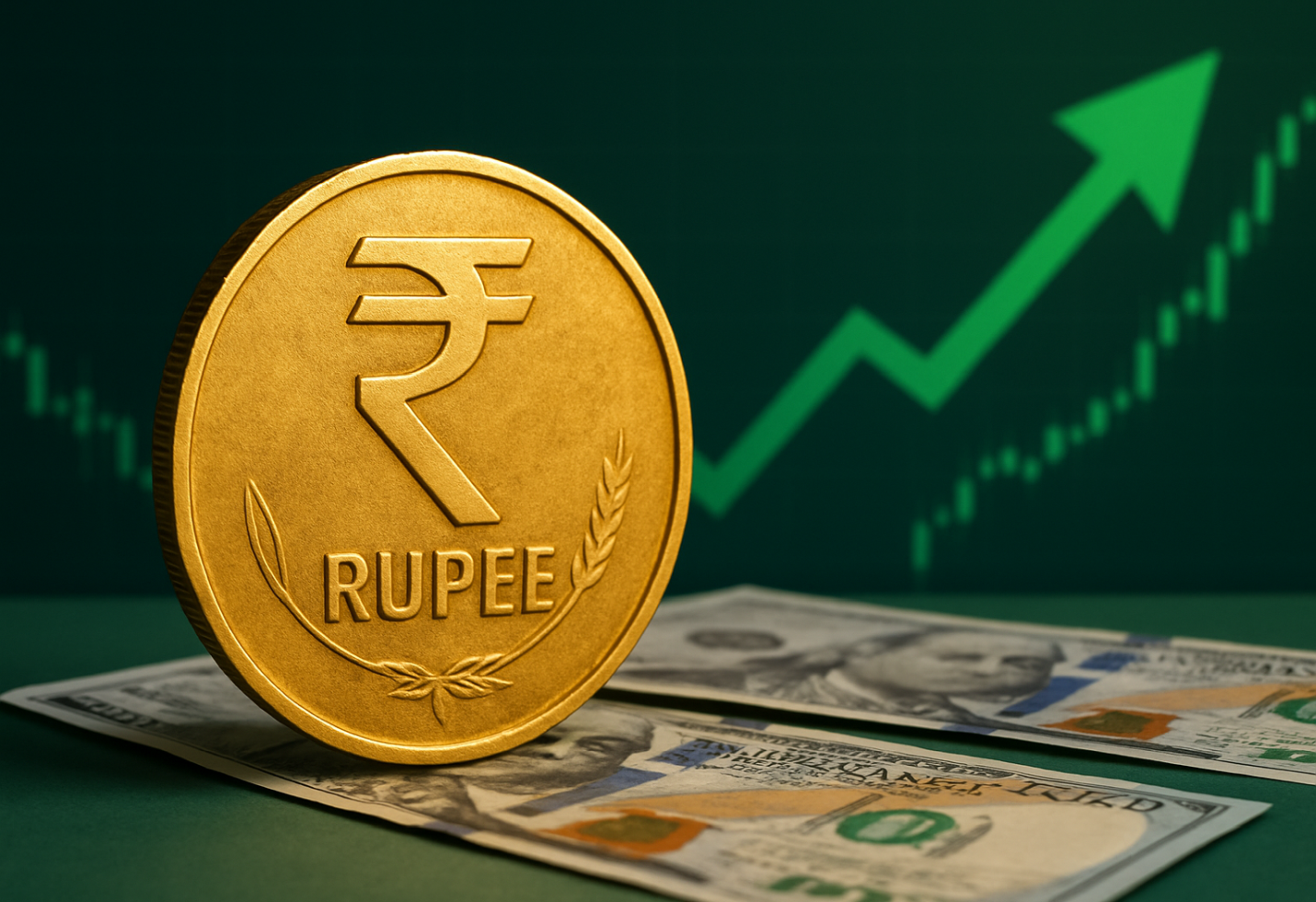Rupee Plummets Amid FII Outflows, Trade Concerns
Foreign fund withdrawal and global trade uncertainty have dragged the Indian rupee to a record low, stoking inflationary fears and complicating the monetary policy outlook.
Summary:
The Indian rupee fell sharply on Tuesday, decreasing by 47 paise to end the day at 85.87 compared to the U.S. dollar. This decline was driven by significant outflows from foreign institutional investors (FIIs) and rising global concerns over trade tariffs. This marked one of the steepest single-day declines in recent months and raised alarms across India’s financial and policy-making circles as the currency approached uncharted territory.
Rupee Cracks Under Pressure, Hits Record Low of 85.87/USD
On Tuesday, the Indian currency experienced a significant drop, falling by 47 paise to finish at ₹85.87 per U.S. dollar, which stands as one of its lowest closing values on record. The sudden fall in the rupee was attributed to a combination of foreign fund outflows, global risk-off sentiment, and uncertainties surrounding trade tariffs, particularly those being imposed and revised by major economies such as the U.S. and China.
According to dealers in the foreign exchange market, the rupee opened weak at ₹85.42 and continued to lose ground throughout the trading session amid persistent dollar demand from oil importers and corporates. The Reserve Bank of India (RBI) was reported to have intervened during the day to stabilise the fall but refrained from significant dollar selling.
Global Trade War Fears and Tariff Uncertainty Weigh Heavy
The rupee’s depreciation comes at a time when global trade tensions are rising once again. With the U.S. mulling increased tariffs on Chinese electric vehicles, steel, and semiconductor components, global investors are growing wary of a full-blown trade war resurgence. These concerns have prompted many investors to exit emerging markets, including India, and shift capital into safer assets like the U.S. dollar and treasury bonds.
Moreover, the recent strengthening of the U.S. dollar index (DXY) to levels above 106 has created added pressure on currencies across Asia. The rupee is not alone in its struggle; most Asian currencies, including the Thai baht, Indonesian rupiah, and Malaysian ringgit, also saw steep declines during the week.
FIIs Pulling Out Capital: Key Reason Behind the Slide
One of the core drivers behind the rupee’s fall has been sustained foreign institutional investor (FII) outflows. As per information from the National Securities Depository Ltd (NSDL), foreign institutional investors (FIIs) have offloaded more than ₹9,200 crore in Indian equities during the past five sessions. The outflows are primarily being driven by:
Concerns over elevated U.S. interest rates, making American assets more attractive
Weakening global growth outlook
Profit booking ahead of quarterly earnings and geopolitical tensions
The resultant capital flight has pressured the domestic currency, especially in the absence of meaningful FDI (foreign direct investment) inflows during this period.
Oil Prices and Importer Demand Add to the Burden
Crude oil prices have remained elevated, hovering around $84–86 per barrel, largely due to supply restrictions from OPEC+ and geopolitical unrest in the Middle East. India, being a net importer of oil, experiences added fiscal pressure when global oil prices rise.
The increase in oil import bills leads to greater demand for dollars by Indian oil companies, which further weakens the rupee. Dealers mentioned that oil-related dollar demand intensified in the latter half of the day, pushing the rupee down even further toward the close.
Inflation and Monetary Policy Concerns Resurface
A weaker rupee also raises the spectre of imported inflation, especially in food, fuel, and electronics. This puts the RBI in a challenging position, as it tries to strike a balance between controlling inflation and supporting growth.
While the RBI has maintained a pause on interest rate hikes over the past quarters, the current currency depreciation could compel the central bank to adopt a more hawkish tone or intervene more aggressively in the forex markets to maintain macroeconomic stability.
Market Reactions and Expert Commentary
Traders and economists alike expressed concern over the sharp fall.
“The rupee’s fall below 85.80 is a psychological breach. Continued pressure from global cues and lack of inflows could see the rupee touch 86.10 in the near term unless the RBI steps in decisively,” said a forex strategist from a private bank.
Market players are keenly observing the forthcoming statements from the U.S. Federal Reserve, as they may provide insights into potential future interest rate decisions. Any hint of prolonged high interest rates in the U.S. could trigger more FII selling and further pressure the rupee.
Outlook: Can the Rupee Rebound?
Whether the rupee stabilises or weakens further will depend on a mix of domestic and global factors:
RBI’s intervention strategy
Direction of U.S. bond yields
FII behaviour ahead of earnings season
Clarity on global trade tariffs
A stable monsoon and cooling domestic inflation could offer some comfort. However, if geopolitical risks escalate or oil prices rise sharply, the rupee could see further downside in the short term.
Conclusion
The rupee’s plunge to ₹85.87 against the U.S. dollar signals brewing tension in India’s macroeconomic landscape. As foreign investors pull back, oil importers seek more dollars, and global uncertainties mount, the pressure on the currency is likely to persist in the near term. Policymakers and investors will now watch closely for signs of stabilisation or further volatility as India navigates a turbulent global environment.
:
The image added is for representation purposes only





